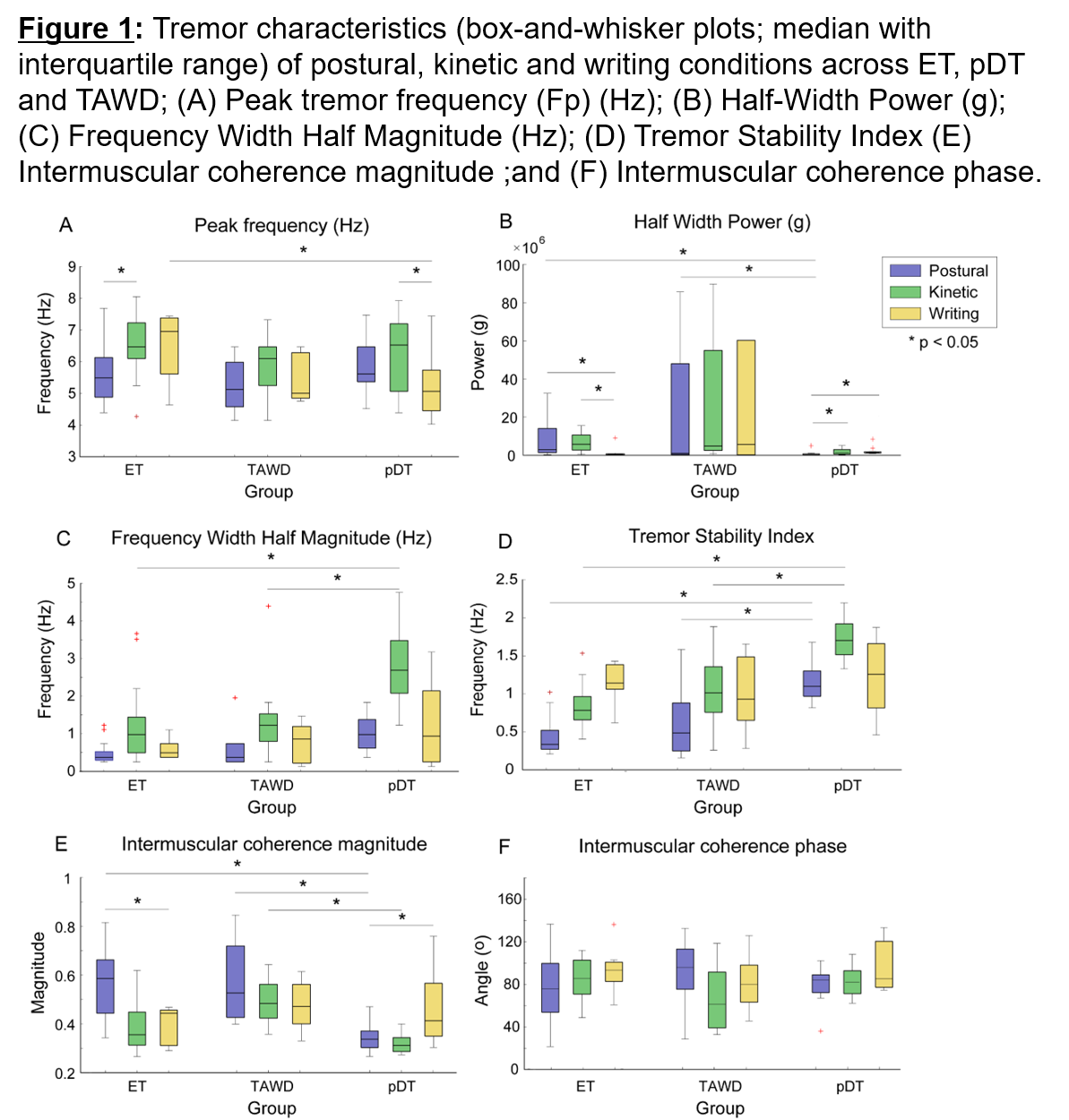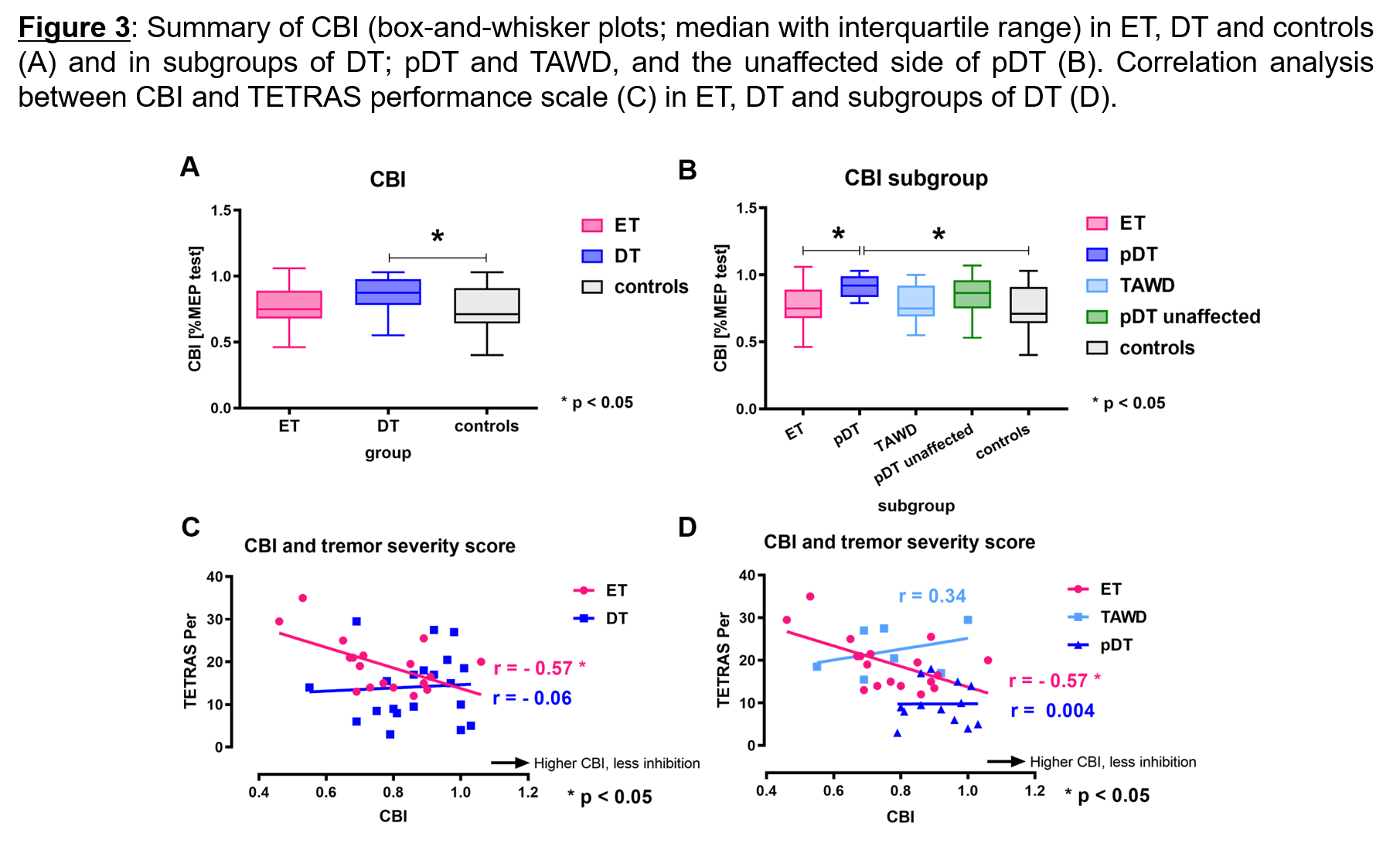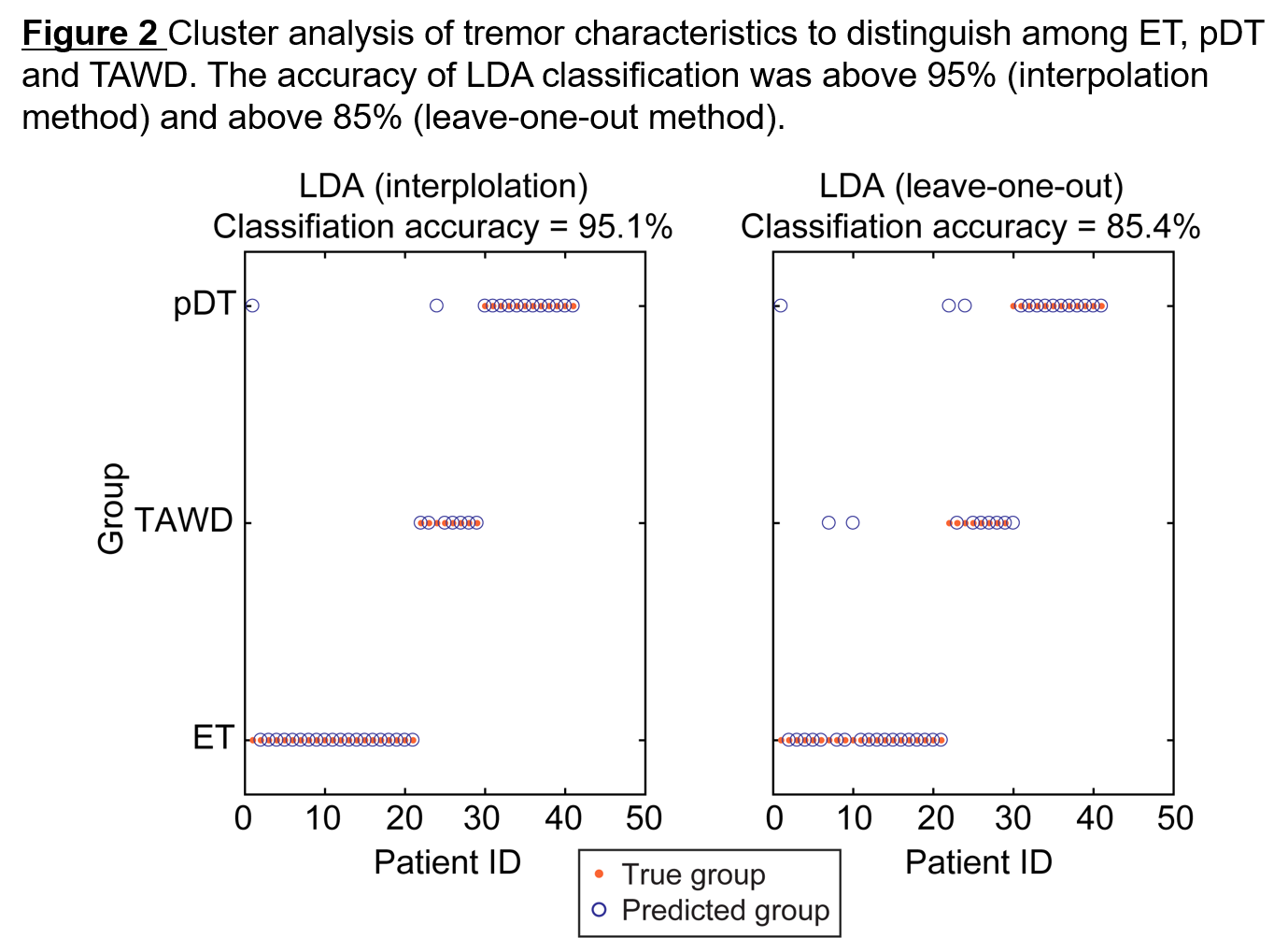Category: Tremor
Objective: To explore the pathophysiology of dystonic tremors (DT) and comparison with essential tremor (ET).
Background: The characteristics and mechanisms of tremor in dystonia are not clearly understood. Previous studies indicated some overlaps in tremor characteristics between DT and ET. The cerebello-thalamo-cortical pathway has been suggested to be involved in tremor genesis in ET but its role is unknown in DT.
Method: Twenty-one ET and 22 DT patients were studied. Patients with DT were subdivided into 13 patients with pure DT (pDT; writer’s cramp with writing tremor and 9 patients with tremor associated with dystonia (TAWD; cervical dystonia with hand tremor). Tremors were recorded by using accelerometry and surface EMG of the antagonist pairs of arm muscles during posture, simple kinetic movement, and writing. Cerebellar brain inhibition (CBI) was performed to assess CTC involvement and correlation with tremor severity.
Results: pDT exhibited higher variability of peak frequency (Fp) and greater tremor instability (TSI) than ET/TAWD regardless of tasks. Intermuscular coherence magnitude (CohM) between the antagonist pairs was greater in writing task in pDT while it was greater in postural holding in ET/TAWD. ET and TAWD have different degrees of interaction between voluntary movement and tremor oscillators in the kinetic condition. A linear discriminant classifier based on five tremor parameters including Fp, tremor variability, TSI, phase delay between temporal fluctuation of movement power and tremor power, and CohM were able to distinguish the three groups with a classification accuracy of 95.1%. CBI was significantly reduced in patients with DT compared to controls. Subgroup analysis showed significantly less CBI in pDT but not TAWD compared to ET and controls. CBI on the unaffected side was not different from the affected side in patients with pDT. There was a negative correlation between CBI and TETRAS performance scale only in the patients with ET.
Conclusion: Our study shows that pDT exhibits increased instability and intermuscular coherence compared to TAWD, highlighting that pDT and TAWD are distinct phenotypes. pDT has reduced inhibition in the CTC pathway probably due to the dystonia. Since the CTC pathway is important for all tremors, this phenotyping difference between pDT and TAWD/ET might also signal a physiological difference.
To cite this abstract in AMA style:
P. Panyakaew, H.J Cho, S.W Lee, M. Hallett. The pathophysiology of dystonic tremors and comparison with essential tremor [abstract]. Mov Disord. 2020; 35 (suppl 1). https://www.mdsabstracts.org/abstract/the-pathophysiology-of-dystonic-tremors-and-comparison-with-essential-tremor/. Accessed December 12, 2025.« Back to MDS Virtual Congress 2020
MDS Abstracts - https://www.mdsabstracts.org/abstract/the-pathophysiology-of-dystonic-tremors-and-comparison-with-essential-tremor/



